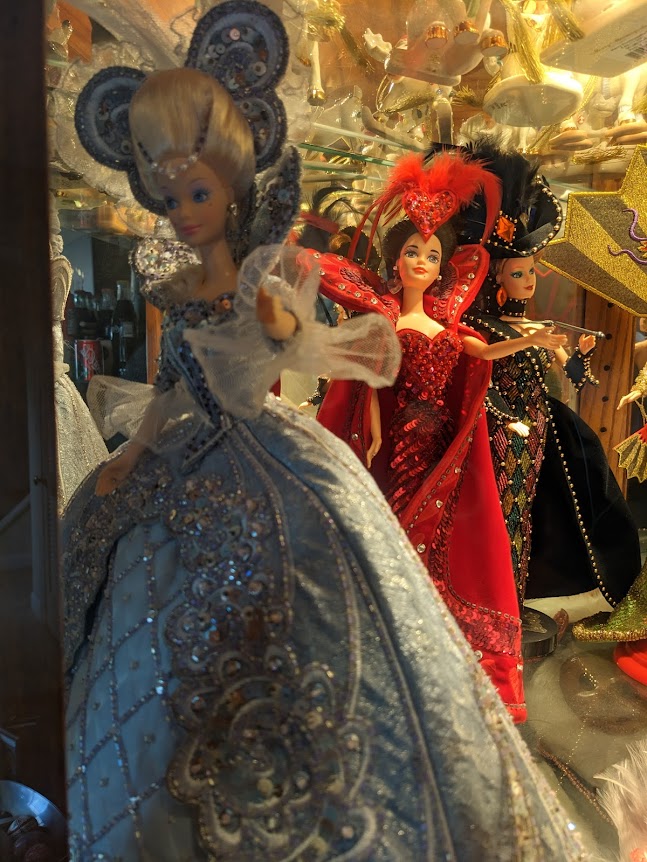In December I had the chance to visit the Design Museum in London for their Barbie Exhibit. I had purchased tickets nine months earlier when I knew I was going to be in the city for the holidays. I took a boomer and a tween (Grandma and granddaughter) with me to see the show. Both are deeply lovely individuals, but neither are big on Barbies. Grandma had just missed the Barbie trend as a girl and granddaughter is firmly in the Harry Potter world. Seeing the exhibit through their eyes, and answering their questions, gave me a better insight into the day than if I'd attended with die-hard Barbie lovers.
First, the exhibit is beautiful! No wonder, considering it was put on by the Design Museum. The layout, the colors, and the flow of the space were gorgeous. The rich, vibrant tones that back up every room allowed the artifacts on display to sing, without feeling overwhelmed by an onslaught of Barbie pink. The ability to focus on specific individual dolls while still telling a collective story was integrated seamlessly.
Second, the exhibit highlights a growing awareness of diversity and a cross-pollination of who Barbie represents and who Mattel has engaged with over the years. At every step the exhibit incorporates an acknowledgement of how Barbie has moved from an idealized upper-class, thin, white, blonde bombshell to a broad cross-section of young (largely female - yes, but not exclusively. And yes, not only played with by females. But at the end of the day Ken - and all his bruhs - remains the arm candy and not the focus) diverse empowering characters.
Third, the history was told well without overwhelming the space or the visitors with timelines and an onslaught of artifacts. While there were a good number of houses, cars, airplanes, and performance spaces there wasn't a glut of stuff for the sake of comprehensiveness. Following the exhibit it, was easy to see how Barbie moved from deep purple Corvette in the 1970s to pink moped in the 2000s. How she shifted from cheerleader on the sidelines to Fifa World Cup referee. How she migrated from perky blonde California tween to a representation of inclusive star power and high fashion.
Fourth, the visitors to the museum asserted the continuing appeal of the doll and the powerhouse that remains the Barbie idea. There were little girls who wanted to play with the dolls set up for that purpose. There were adults and siblings smiling to see the Barbie lover in their group wide-eyed and giddy at their surroundings. There were Barbie adults thrilled to share the space with their friends and other doll lovers. And, like me, there were the "experts" answering questions and pointing out intricacies to the non-intitiated helping to explain the lore, the love, and the ongoing appeal.
We left wondering:
Who "owns" the collection? Who donated the items and who still owned brand-new unopened clothes and dolls from 50+ years ago? What will happen to the artifacts once the exhibit closes? How did the curator and collections staff decide how to best display the items they had? Walking away from a museum with as many questions as answers is, to me, the sign of a well-thought-out, well-curated exhibit.
So glad I got a chance to go!








Comments
Post a Comment